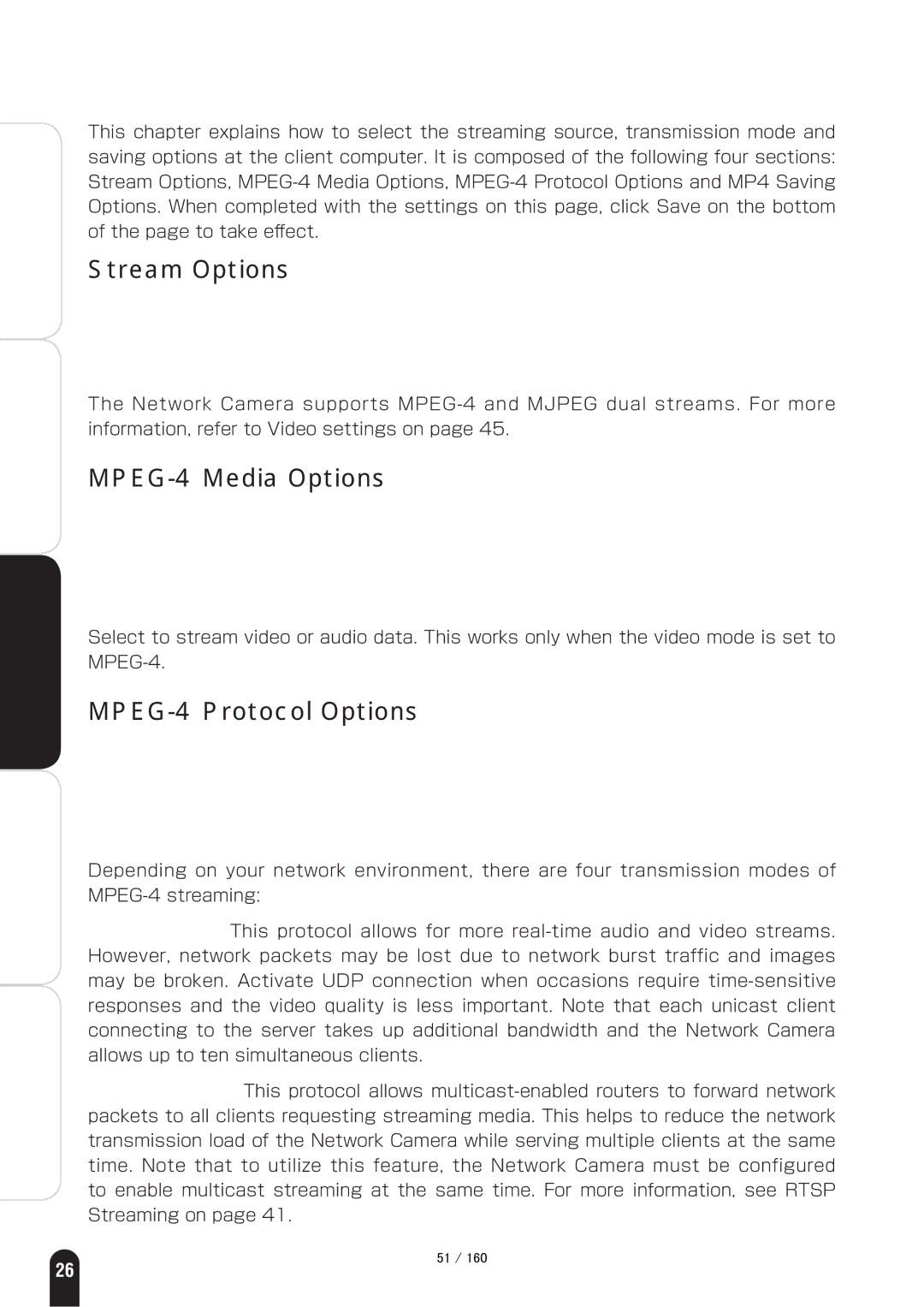Client Settings
This chapter explains how to select the streaming source, transmission mode and saving options at the client computer. It is composed of the following four sections: Stream Options, MPEG-4 Media Options, MPEG-4 Protocol Options and MP4 Saving Options. When completed with the settings on this page, click Save on the bottom of the page to take effect.
Stream Options
The Network Camera supports MPEG-4 and MJPEG dual streams. For more information, refer to Video settings on page 45.
MPEG-4 Media Options
Select to stream video or audio data. This works only when the video mode is set to MPEG-4.
MPEG-4 Protocol Options
Depending on your network environment, there are four transmission modes of MPEG-4 streaming:
UDP unicast: This protocol allows for more real-time audio and video streams. However, network packets may be lost due to network burst traffic and images may be broken. Activate UDP connection when occasions require time-sensitive responses and the video quality is less important. Note that each unicast client connecting to the server takes up additional bandwidth and the Network Camera allows up to ten simultaneous clients.
UDP multicast: This protocol allows multicast-enabled routers to forward network packets to all clients requesting streaming media. This helps to reduce the network transmission load of the Network Camera while serving multiple clients at the same time. Note that to utilize this feature, the Network Camera must be configured to enable multicast streaming at the same time. For more information, see RTSP Streaming on page 41.
㪌㪈㩷㪆㩷㪈㪍㪇

